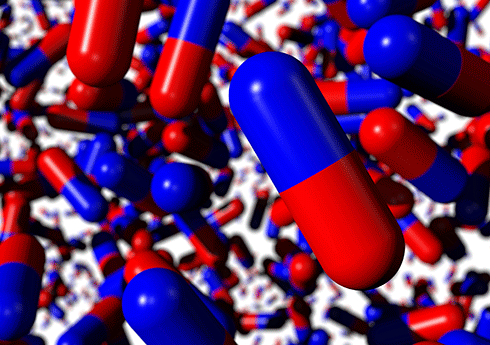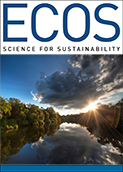
|
Published: 2 December 2014
Megadosing the environment? How toxic waste from drug manufacture can create problems
We’ve all heard about the pollution of our waterways from drug and cosmetic residues in our sewage and wastewater. But what about the waste discharged from pharmaceutical manufacturing facilities, especially the growing number of factories in places like India and China?
Waste from drug factories, however, is emitted in much larger quantities. Further, the active ingredients in the drug waste are often unmetabolised, and the waste may be also be accompanied by other pollutants from the manufacturing process.
Ecotoxicologists use the term ‘active pharmaceutical ingredients (APIs)’ to describe the pharmacologically active residues that enter our waterways via pollution. APIs excreted in human waste originate from a relatively small, dispersed percentage of the population; the drugs will have already been metabolised and diluted by large volumes of water by the time they reach wastewater systems.
Waste from drug factories, however, is emitted in much larger quantities. Further, the active ingredients in the drug waste are often unmetabolised, and the waste may be also be accompanied by other pollutants from the manufacturing process.
‘A moral challenge’
In a recent review of pollution from drug manufacturing, Dr Joakim Larsson from the University of Gothenburg, Sweden, states:
‘Although much new information has emerged in the past five years, the picture of pharmaceutical pollution from manufacturing is still highly fragmentary, and how common large emissions of APIs are remains unknown.
‘It is expected that only a small fraction of the APIs is lost through discharge during production, but it is apparent that the concentrations in effluents from manufacturing plants can be several orders of magnitude greater than in municipal sewage effluents.
‘It is also very uncommon for API emissions from manufacturing to be specifically regulated.’
Dr Larsson also notes that the lower costs associated with manufacturing in middle income countries have caused them to become attractive locations for pharmaceutical company operations. However, wastewater infrastructure is generally less advanced and the regulatory environment often lags behind those of higher income countries.
‘The outsourcing of pollution, identified as an issue for several sectors in society, clearly poses a moral challenge for the pharmaceutical industry as well,’ Dr Larsson writes.
Patancheru, near Hyderabad in India, is one such location that is home to many pharmaceutical manufacturing operations. Studies undertaken in this area in 2007 showed that, for some pharmaceuticals, API concentrations in effluent from a local wastewater treatment plant were greater than those found in the blood of patients taking the medicine.
Ecologically toxic concentrations of APIs have also been found in the treated effluent of factories in China, Korea, Taiwan and Pakistan; other reports have identified factories in the US and Europe as significant sources of pollution.
Drugging the environment?
According to Dr Rai Kookana, Team Leader, Emerging Contaminants and Risk Assessment, at CSIRO’s Land and Water Flagship, research to date indicates that human and veterinary pharmaceuticals are widely dispersed in aquatic and terrestrial environments where they are taken up by many different organisms.
He says some pharmaceuticals are designed to have biological actions at very low concentrations (nanograms per litre) rendering them ‘potentially potent environmental contaminants’.
His colleague, environmental chemist Dr Mike Williams, agrees, adding that while few studies on the ecological impact of APIs have been carried out, the available research reveals that the impact of pharmaceuticals on ecosystems is unpredictable.
Non-lethal impacts from hormones associated with the contraceptive pill include effects on the reproduction of some fish species, leading to their subsequent decline. Another UK study found that consumption of fluoxetine, an antidepressant drug, by birds eating invertebrates from sewage treatment plants could change their feeding behaviour.
There are also more serious, toxic consequences for some organisms. Exposure to residues from diclofenac – a non-steroidal anti inflammatory drug (NSAID) – in the tissues of Asian cattle resulted in population declines of more than 95 per cent of some species of vultures in India and Pakistan.
‘Until now scientific knowledge has been driven by technology and we are only just beginning to consider the potential ecological consequences,’ comments Dr Williams.
Leaky pipes
While the world’s expanding and ageing human population requires ever-increasing amounts of pharmaceuticals to address health issues, the risk of exposure to APIs– and approaches to managing that risk – vary considerably between high- and low-income countries.
‘In higher income countries people have access to better healthcare and more medicines, but they also have older populations, and more chronic disease requiring medicine, ‘ Dr Williams says.
He also points out that wealthier countries have more of a balance between the amount of use and removal of drug waste in wastewater treatment plants; lower income countries, on the other hand, have lower use rates but minimal treatment levels.
While treating manufacturing or domestic waste can significantly reduce the volumes and potential toxicity of APIs, few countries impose standards on what is acceptable for release into the environment, and pollution is still an issue.
Studies in New York’s Hudson River have revealed very high levels of antibiotic-resistant, sewage-associated bacteria that could only have resulted from untreated sewage entering the river.
Sewer overflows resulting in entry of untreated sewage in waterways is a potentially significant problem in Australia, especially during the wet season. During the January 2013 floods in Brisbane, for example, some sewage treatment plants were submerged.
While developing a method for detecting sewage overflows in southern Sydney’s highly polluted Cook’s River, Associate Professor Stuart Khan from the University of NSW discovered that the breakdown products of ibuprofen, naproxen and other NSAIDs could be used to distinguish between treated waste water and raw sewage, because the sewage-treatment process changes the drug from a non-toxic version (or enantiomer) to one that has been linked to liver toxicity. Studying the ratios of each enantiomer indicates whether untreated sewage is entering the river.
‘Around the Cooks River the pipes are constantly leaking untreated sewage into the environment, even without rainfall, although there are higher loads during wet weather,’ says Assoc Prof Khan.
‘Development has outpaced the capacity of the sewage infrastructure to handle the volume passing through it each day – or for it to be adequately maintained.
‘It is unlikely that Sydney is alone in dealing with this issue. ‘
Dr Kookana says that in many low or middle income countries, the situation is worse. ‘Sewer connectivity is low, and in some areas waste is collected predominantly in septic systems, with leaking systems potentially impacting groundwater and the disposal of raw sewage or “septage” directly onto land.’
Recent research by Drs Kookana, Williams and colleagues weighed up the different risks from APIs between high- and low-income countries.
Their results lent weight to concerns that while much of the world’s drug manufacturing is carried out in China and India, a significant percentage of the population and manufacturing base is not connected to wastewater treatment facilities. Those facilities that are available often don’t work, leaving the waste with nowhere to go but out into environmental systems, which are straining to cope – such as the Yamuna river flowing into the Ganges.
India’s new Modi-led government is taking steps to clean up sewage and manufacturing waste pollution in the Ganges.
In July 2014, the new Ministry for Water Resources, River Development and Ganges Rejuvenation announced a US$334 million integrated Ganges Development Project known as Namami Ganga, which promised a clean Ganges within three years, thanks in part to improved treatment of manufacturing and domestic waste.
While there are active discussions about restoring the health of the Ganges in India, Dr Kookana is calling for further research to be undertaken to determine the risk of APIs in Australia, given our uniqueness in terms of low river flows, unique flora and fauna, and increasing reliance on recycled water.
Australia also has an opportunity, he adds, to extend its capability to India and contribute to the clean-up of the Ganges.
‘We currently do not have a good grasp on exposure, we do not know the effects APIs may have on our fauna, and there is no regulatory assessment for the environment, ‘ he warns.
Do no harm
Because of the value of pharmaceuticals to human and veterinary health, without hard data it is unlikely any drugs will be reviewed to assess their potential for ecological harm.
‘Unlike pesticides, pharmaceuticals remain a non-regulated group of compounds as far as their environmental impact is concerned,’ comments Dr Kookana. ‘While the European Medicines Agency has placed risk assessment requirements on [European] manufacturers in this regard, Australian authorities are yet to follow suit.
‘It is a key deficiency in our current system.’
The NSAID, diclofenac, and the synthetic hormones ethinyloestradiol and oestradiol were recently added to the new European Water Framework Directive’s watch list. The European Medicines Agency (EMA) now requires that any company seeking registration of a new drug must produce an environmental risk assessment that not only tests degradation in the environment and potential toxicities, but also estimates the amount expected to enter the environment.
It is hoped that third-party manufacturers outside Europe will benefit from its improved standards and that other countries will follow suit in their environmental legislation.
Elsewhere, researchers are seeking to identify drugs that produce the desired therapeutic outcome for the individuals being treated, but with reduced pollution loads at the manufacturing stage.
But experts like Dr Larsson argue that it may ultimately be more cost-effective to better manage the pollution at its source through improvements in technology than to rely on developing alternative drug therapies.
Dr Kookana says Australia should also enhance awareness about the RUM (Return Unwanted Medicine) project which addresses the problem of collection and proper disposal of unused drugs that may otherwise be flushed down the toilet.
‘Consumers should “think before throwing ” unused drugs and follow the guidance provided on the RUM website to minimise any environmental harm,’ he adds.
Dr Williams says that taking action, based on quality research, is imperative.
‘Irrespective of where APIs are entering the environment, if pollution is entering systems already stressed by poor water quality, then it could be the tipping point for the ecosystem. ‘




